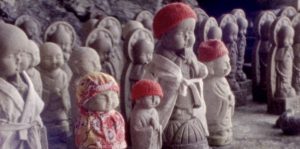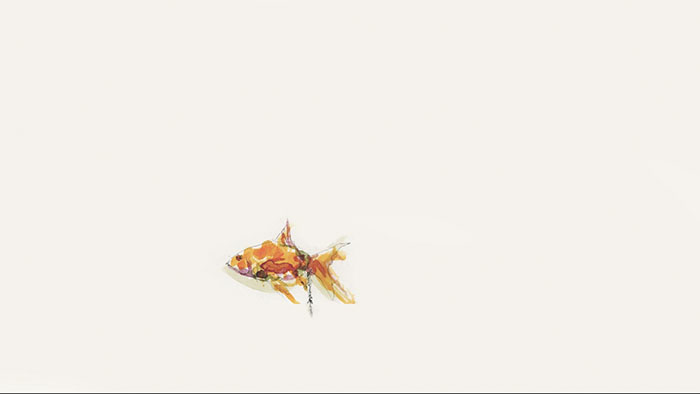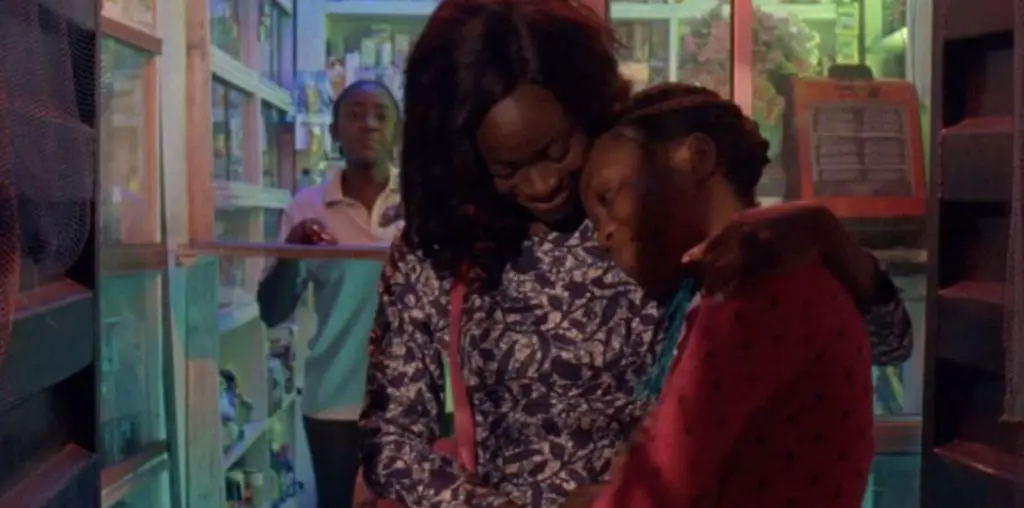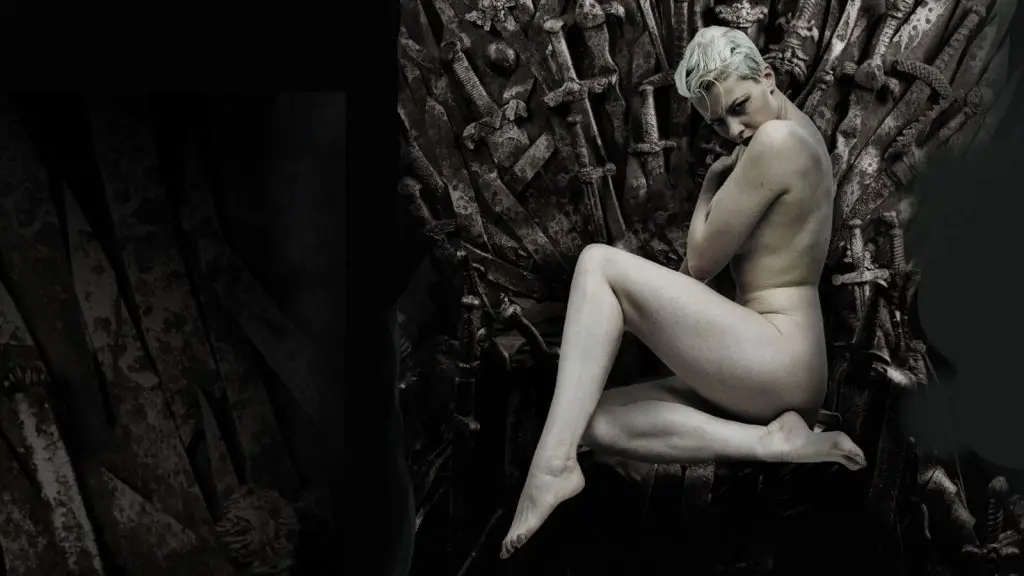
I’m curious. You have your written piece, what was the process like to decide what type of animation, or what time of imagery style of how… What were those discussions like?
Kira Dane: It was really, really specific. I think maybe that doesn’t necessarily come across, and I can’t tell if it’s a good thing or a bad thing. But we thought so long and hard about which sections would be in what medium and why. And there are very clear distinctions. The Japanese section is watercolor and then the Super 8 and the paper-ripping animation being in New York and then slowly having that line between the mediums go away. That was supposed to be symbolic of the two different sorts of wildly different experiences I had of having an abortion in New York, which is so kind of emotionally detached and just a surgical procedure. Then my discovery of Mizuko kuyō tied with a lot of who I am on my Japanese side and growing up, going to Japan a lot, and the culture surrounding death there. Anyways, so choosing those mediums based on those feelings, but then switching the mediums at the end to show the reckoning between those two sides, if that makes sense.
How do you balance your vision against what the audience is going to perceive ultimately? And how much does our end of it affect what you present and how it’s developed?
Katelyn Robledo: Yeah, I mean, I think it’s incredibly important to keep the audience in mind. And I think from the beginning, Kira and I wanted to approach the topic of abortion, especially the way we talk about it in the U.S in a new way. I also needed to introduce people who have had very little or no experience with Buddhism or even thinking about abortion in any other context to this very complex, emotional experience. Then do it in a way that is still relatable and that hopefully, somebody can still understand it in a new light, even if they haven’t gone through the experience themselves.

“The film, the story, and the experience of having an abortion are so layered and so complicated.”
I think with all of that, we knew that it was going to lean more experimental, but we always wanted it to stay, I guess, accessible is the right word. We wanted it to be somewhat easy to follow, but not lose any of the complexity within that. The film, the story, and the experience of having an abortion are so layered and so complicated. While also having an audience that might have been pro-life up until this point, or is now starting to explore new ways of thinking about abortion and they see this film and hopefully they can find a new way to think about it.
And I another, oh go ahead. I think another thing we wanted to do was make something for people who have had this experience as well. Women who have also experienced miscarriage because it’s just something that is not talked about openly nor in a way that involves any ability to grieve or be vulnerable. We wanted to say it’s okay to feel it’s okay to grieve for these experiences. It doesn’t mean that what you’ve done is inherently wrong. And I think that’s the background that if you show any signs of grief in the U.S right now, it’s automatically seen as a reason to be anti-abortion. We wanted to shift that narrative and open up space to literally just feel and be okay in those feelings.


